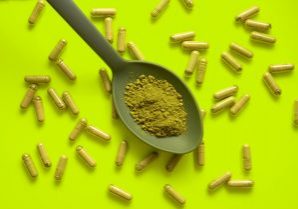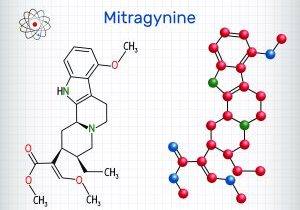Did you know that there are many limitations put on what we can and cannot say about kratom? Even when new science points out exciting possibilities for kratom, we can often not share that news with our customers due to FDA regulations.
What can we put on our kratom labels, and why does this matter so much in the industry?
Today, we’ll give you some deep insight into what is and what is not allowed when it comes to kratom advertisement and how we are working to improve that. The restrictions in place may be shocking, but they are the reality of what the industry must deal with.
The Truth About What We Can Say
Here at Phytoextractum, we do our best to keep our customers informed with the latest news in Kratom while ensuring our advertising and labeling first with all current guidelines. It’s not always an easy line to walk, but we do our best.
Our Product Information
When you visit our website and browse the kratom products that we have available, there is certain information that you will always find:
- Product name
- Product strain
- Product strain origins
- Product active ingredients
- Testing information
You will notice that our product pages never mention any specific benefits that consumers might look for from kratom, nor do we give guidance about using kratom for any specific conditions.
Avoiding Unsubstantiated Claims
The biggest thing that we have to avoid when writing up any product labels, descriptions, or articles is that the FDA would consider unsubstantiated claims.
Under FDA guidance, there are two types of claims. Health claims are claims that must be pre-approved by the FDA and specifically address how a product or ingredient treats a specific condition or symptom. Structure/function claims are claims about nutrient effects that can be used more generally, but they still must have enough evidence to support these claims.
The FDA does not permit kratom vendors to use either health or structure/function claims as they do not currently recognize much of the ongoing research about kratom and its potential effects.
AKA’s Compliance Guidelines
In addition to paying attention to the latest news about kratom out of the FDA, we use the GMP compliance program rules from the American Kratom Association to guide what we do and do not say about kratom in our advertising and on our labels.
Essentially, this means that we do the following on our labels:
- We do not say that kratom can treat any specific disease, nor do we include any specific research data, clinical studies, or health claims as the FDA could claim they are unsubstantiated.
- We always include a disclaimer that our products are not intended to treat any specific disease or condition.
- We ensure that our products affirm that we have not altered the content of the active ingredient in any way.
- We make sure our products all have the appropriate batch and lot numbers.
By extension, we are also careful not to make any specific claims about what kratom can and cannot do in our marketing as well. We have seen how the FDA prevents vendors from sharing these types of experiences or ongoing research areas, so we reduce our risk by covering other areas instead.
FDA Pushback
The back-and-forth between advocates for the kratom industry and the FDA has been going on for years. While the FDA continues to try to push for the scheduling of kratom as a drug, the National Institute of Drug Abuse has concluded through their studies that it does not qualify for scheduling at this time.
Still, the FDA continues to ignore ongoing research and considers all claims about kratom to be unsubstantiated. Simultaneously, they affirm that kratom research suggests it may be just as dangerous as opioids, which is an unsubstantiated claim by their own terms.
Ultimately, the FDA’s conflict to settle on reasonable and measured regulation of the kratom industry will continue for years to come.
The Future Of Advertising And Labeling
The restrictions placed on kratom vendors is dangerous, and we’re not just saying that because it can be challenging to know what we can and cannot legally say!
Strict limitations are put in place without giving clarity to the kratom industry at large, leading to a lot of confusion for customers. High-quality vendors like us take these restrictions seriously while other companies ignore them and make bold, inaccurate claims.
As a consumer, how are you supposed to know what is and what is not okay? Without clarity or approved regulation from the FDA, consumers are left in a dangerous position.
Implementing The KCPA
One way that the American Kratom Association is addressing this problem is by working with specific states to implement the Kratom Consumer Protection Act. These acts function on the state level and ensure that kratom vendors working in that state must follow guidelines. These guidelines provide information on how labeling and information should be handled and regulated.
Truth in Labeling Program
The AKA also recently started a program known as Truth in Labeling. Through this program, companies that are making bold or unsubstantiated claims can be reported to the group. AKA will then reach out to the vendor to help them get their labels under control.
If the vendor continues to risk the industry’s future by refusing to comply with FDA protocols, the vendor will be reported to the FDA. This process will begin the self-regulation that is present in other industries.
Keep Yourself Informed
While we will continue to ensure that we provide as much good information as possible while also creating our high-quality products, we urge curious consumers to stay up to date through other sources.
Kratom vendors like us are limited in what we are permitted to say because unsubstantiated claims could cause the FDA to target our business. Still, other organizations such as the American Kratom Association can share more research, statistics, and information.
To stay up to date with the latest kratom news, visit AKA’s website today.











